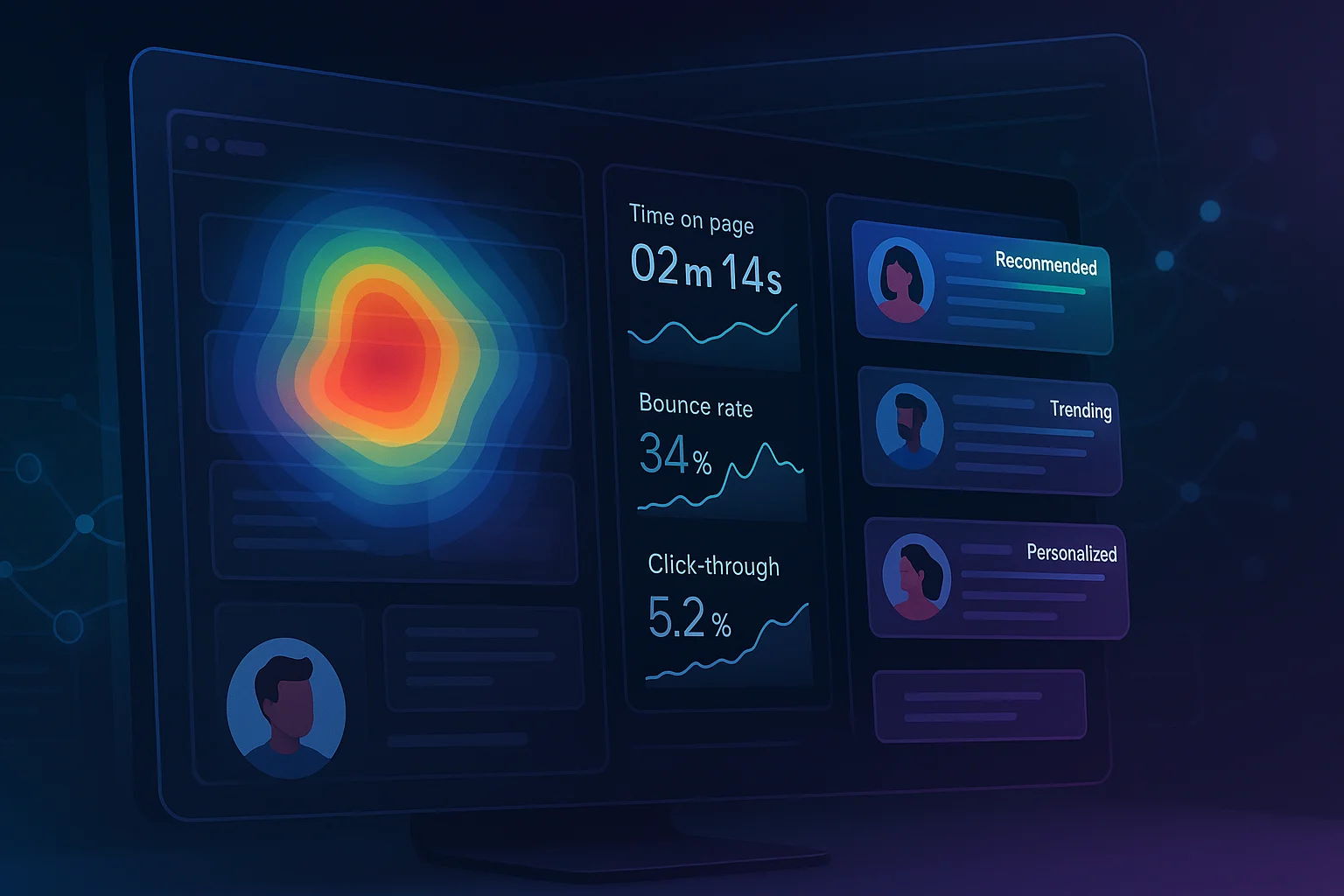Optimising Digital Experience: The Key to Engagement, Discoverability, and Growth
![]() Written by Brendan Byrne
| Friday, July 11, 2025
Written by Brendan Byrne
| Friday, July 11, 2025

Every second your visitors spend on your website is a chance to either captivate or lose them. The digital experience isn’t just about how things look—it’s about how quickly and intuitively users find what they need, how relevant that content feels, and whether they leave engaged or frustrated.
At the heart of today’s best-performing digital strategies lie three pillars: user experience (UX) design, personalisation, and engagement optimisation. Together, they drive discoverability, time-on-site, conversions, and ultimately, business growth.
Let’s explore how these elements connect—and how platforms like DataOT are empowering teams to deliver exceptional digital experiences at scale.
Why Digital Experience Is Everything
Digital experience encompasses every interaction a user has with your brand online—from landing pages and product descriptions to navigation speed and search relevance. A good experience feels seamless, tailored, and efficient. A poor one? Confusing, slow, or irrelevant.
Here’s why digital experience matters:
- 70% of users abandon sites due to poor UX
- Personalised content converts 80% better than generic messaging
- Fast, well-structured websites see lower bounce rates and better SEO rankings
In short: if you want to grow, you need to design for experience, not just aesthetics.
User Experience Design: Beyond Beautiful Interfaces
Effective UX design isn’t just about nice buttons and fonts. It’s about removing friction.
Good UX helps your audience:
- Navigate intuitively
- Find relevant content effortlessly
- Take action without second-guessing
Think of UX as your silent salesperson—working 24/7 to guide, reassure, and convert. That’s why leading teams obsess over clarity, consistency, and load times.
Key UX Design Principles
- Clarity over cleverness – Don’t make users guess. Use familiar layouts and labels.
- Performance-first – A gorgeous page that loads slowly is a UX failure.
- Mobile-optimised – With over 60% of traffic from mobile, responsive design isn’t optional.
- User feedback loops – Use tools like heatmaps and session recordings to spot pain points.
DataOT’s API-first architecture and edge-deployed content delivery ensure that your UX remains fast and frictionless—no matter how complex your content strategy becomes.
Personalisation: From Generic to Just-for-Me
Modern users expect relevance. Whether it’s product suggestions, location-aware content, or contextual calls-to-action, personalisation drives results.
But many marketers still rely on manual segmenting or cookie-based rules that don’t scale. That’s where AI-powered automation changes the game.
The Power of Personalisation with DataOT
- Dynamically adapt messaging based on user behaviour
- Serve content tailored to search intent, location, or source
- Streamline journeys with AI-recommended content pathways
For example, a returning visitor who previously read about “eCommerce SEO” could be served a CTA linking to your latest guide on product schema optimisation. No manual setup. Just smart, scalable personalisation built into your CMS.
UX Metrics: Measuring What Matters
To improve experience, you need to measure it. But not all metrics are created equal.
Here are the most useful UX metrics to track:
- Time on page – A proxy for content engagement
- Bounce rate – Are users leaving too early?
- Pages per session – Indicates ease of navigation
- Scroll depth – Shows whether content layout supports reading
- Conversion events – Ultimately, did UX drive results?
With DataOT, these insights are surfaced through real-time analytics, not buried in spreadsheets. Our platform connects UX metrics with content performance, so you know not just what’s happening—but why.
Content Discoverability: Helping Users Find What Matters
Even the best content can underperform if it’s buried or poorly linked.
Discoverability is the bridge between content creation and content impact. That means:
- Smart internal linking (e.g. with OT-Linker)
- On-site search tuning
- Contextual navigation elements
- Content clustering for topic authority
Using OT-Linker, DataOT customers can automate internal links at scale—boosting SEO, surfacing deep content, and reducing bounce rates. It’s like having an in-house content strategist working round the clock, minus the manual effort.
Engagement Optimisation: Turning Attention into Action
Clicks are great—but engagement is what drives growth.
Here’s how to optimise for deeper engagement:
- Use intent-matched CTAs – Don’t push demos if they’re just browsing; offer a guide or newsletter
- A/B test layouts – Small design tweaks can lead to big conversion gains
- Progressive content disclosure – Break long pages into expandable sections to encourage reading
- Real-time personalisation – Show different next steps based on user behaviour
DataOT supports all of this out-of-the-box. With built-in A/B testing and real-time personalisation, you can iterate and improve constantly—without waiting for developer cycles.
Why This Matters for You
Whether you're a marketer focused on conversion, an SEO wanting crawlable structure, or a content strategist managing scale, digital experience is your shared success metric.
By focusing on UX design, personalisation, and engagement:
- You improve SEO rankings
- You reduce bounce and boost conversions
- You build brand trust and loyalty
And with DataOT, you don’t have to cobble together 10 tools or rely on manual workflows. You get a fast, flexible, AI-empowered platform that scales with you.
Next Steps
If you’re ready to elevate your digital experience strategy, start by exploring how OT-Linker automates one of the most crucial—and overlooked—engagement levers: internal linking.
Want to personalise, measure, and optimise every visitor’s journey with less effort? DataOT gives you the power to do just that.
Ready to unlock smarter, faster digital experiences? Discover how DataOT can help you scale engagement with ease.